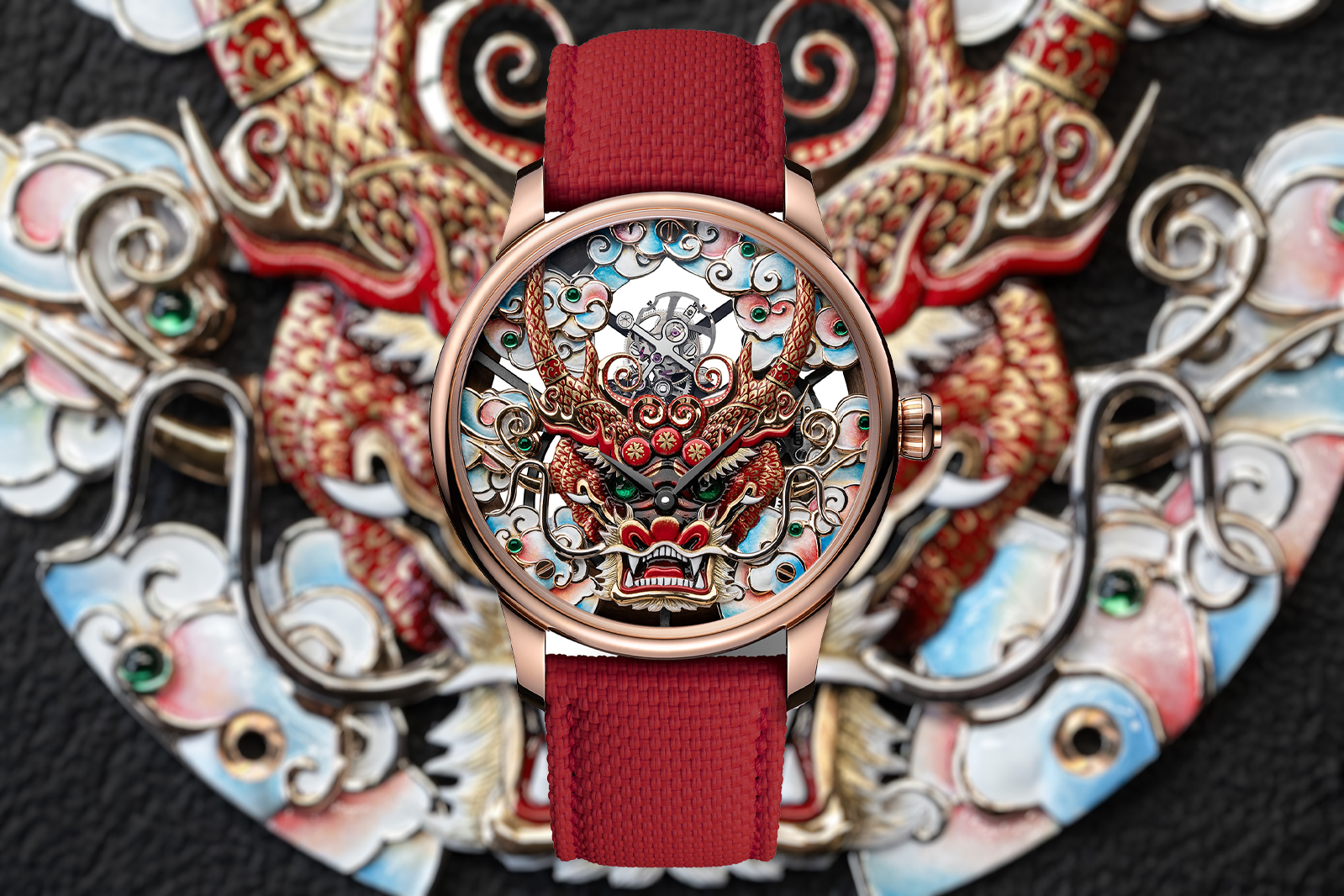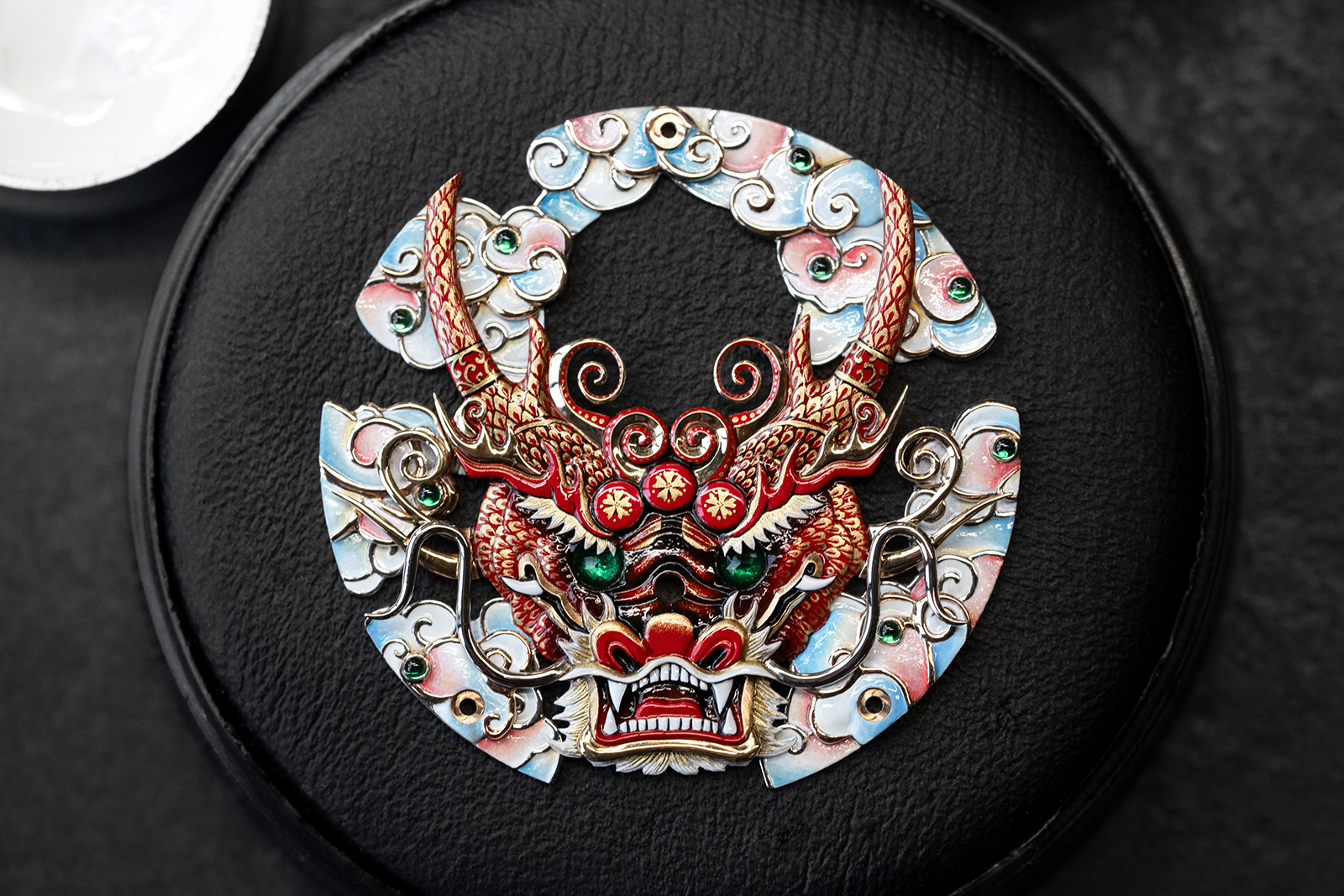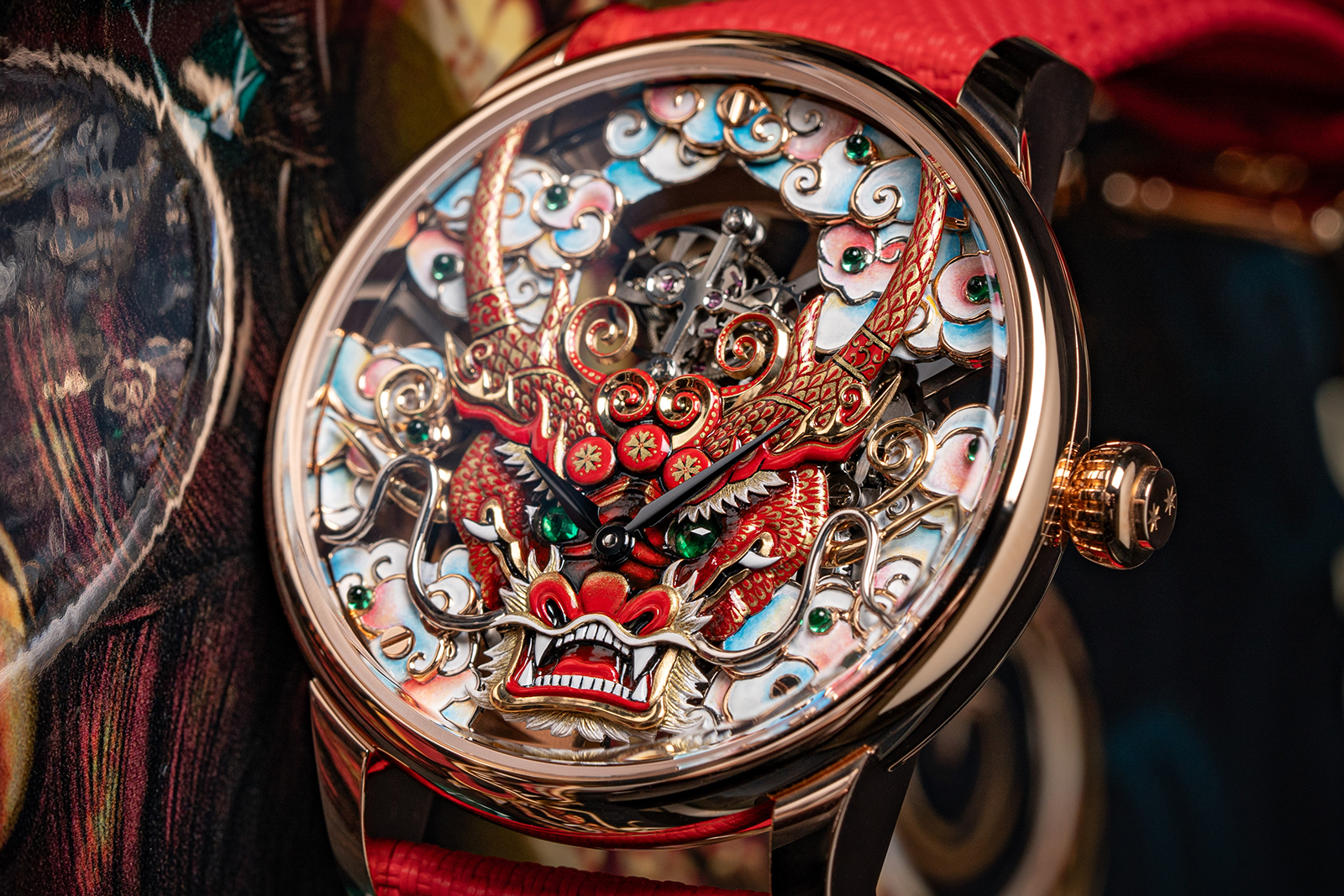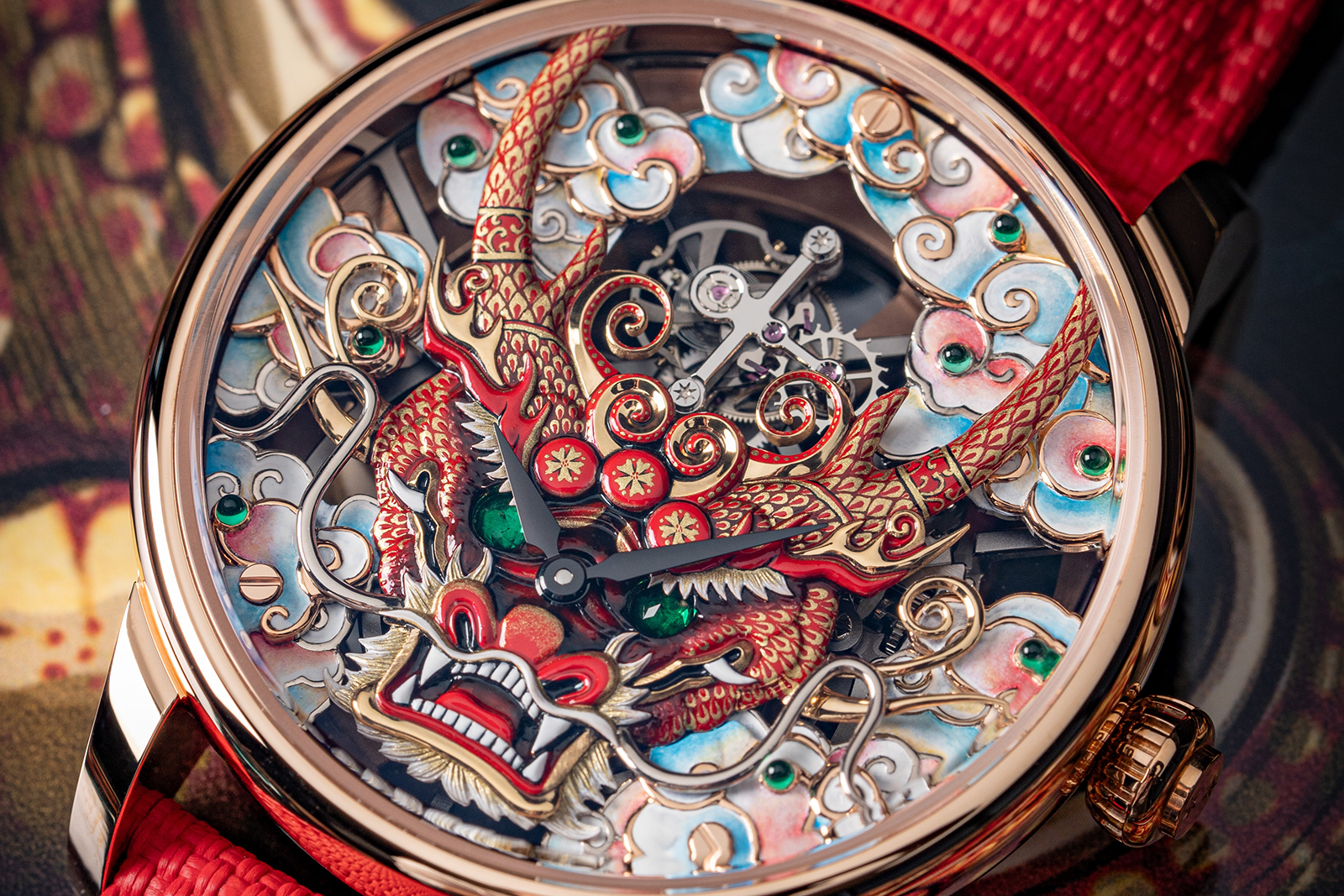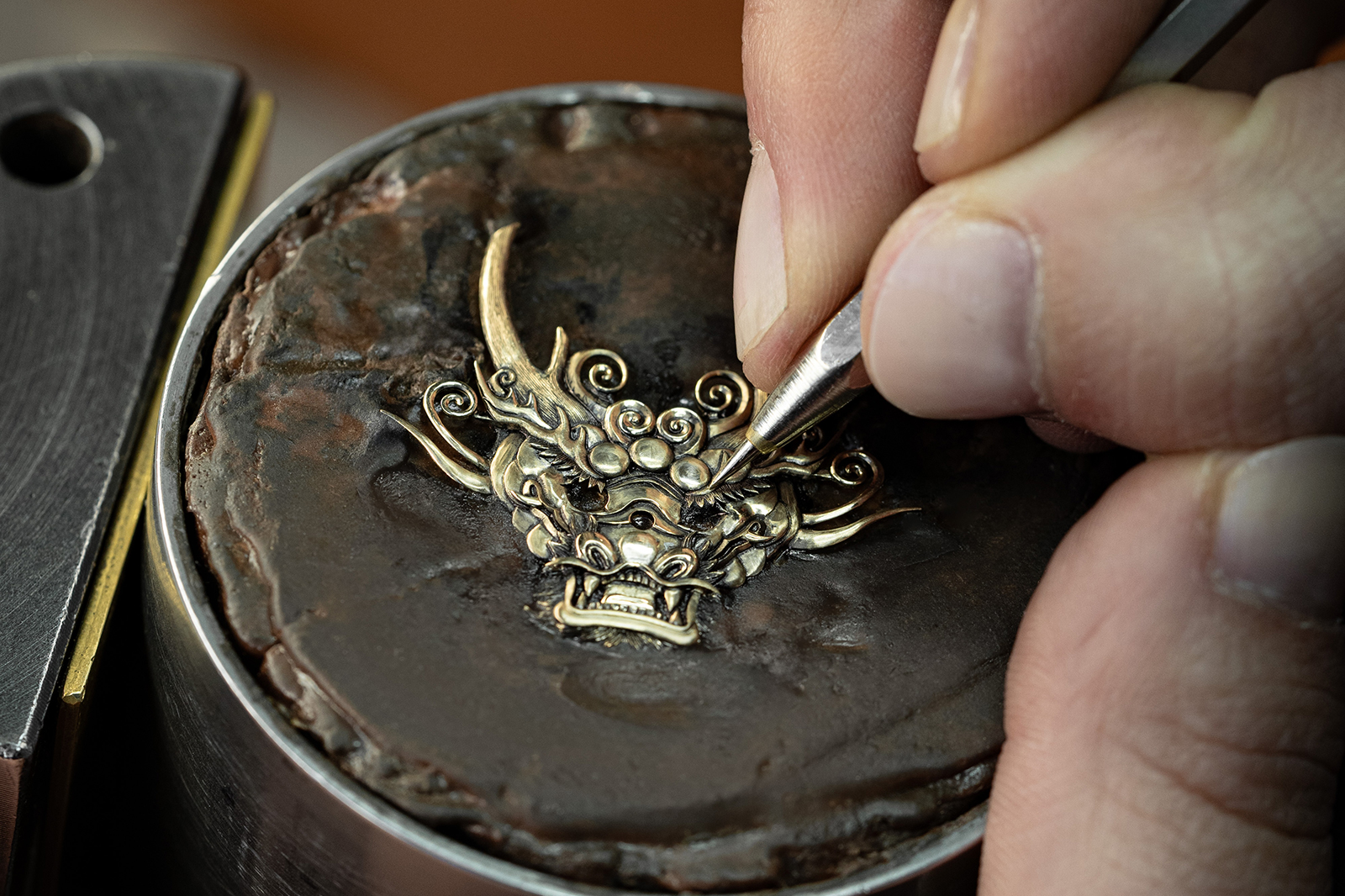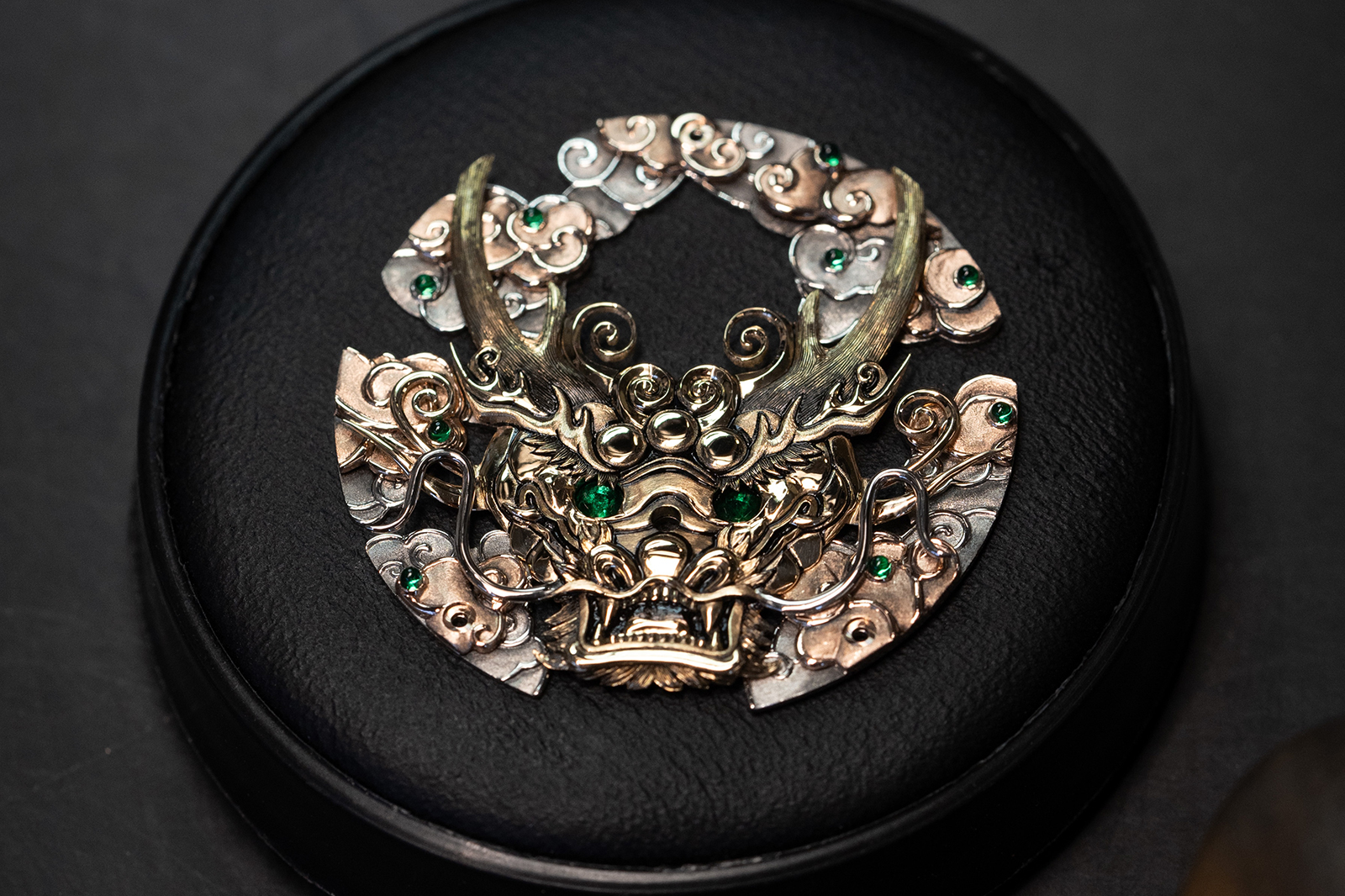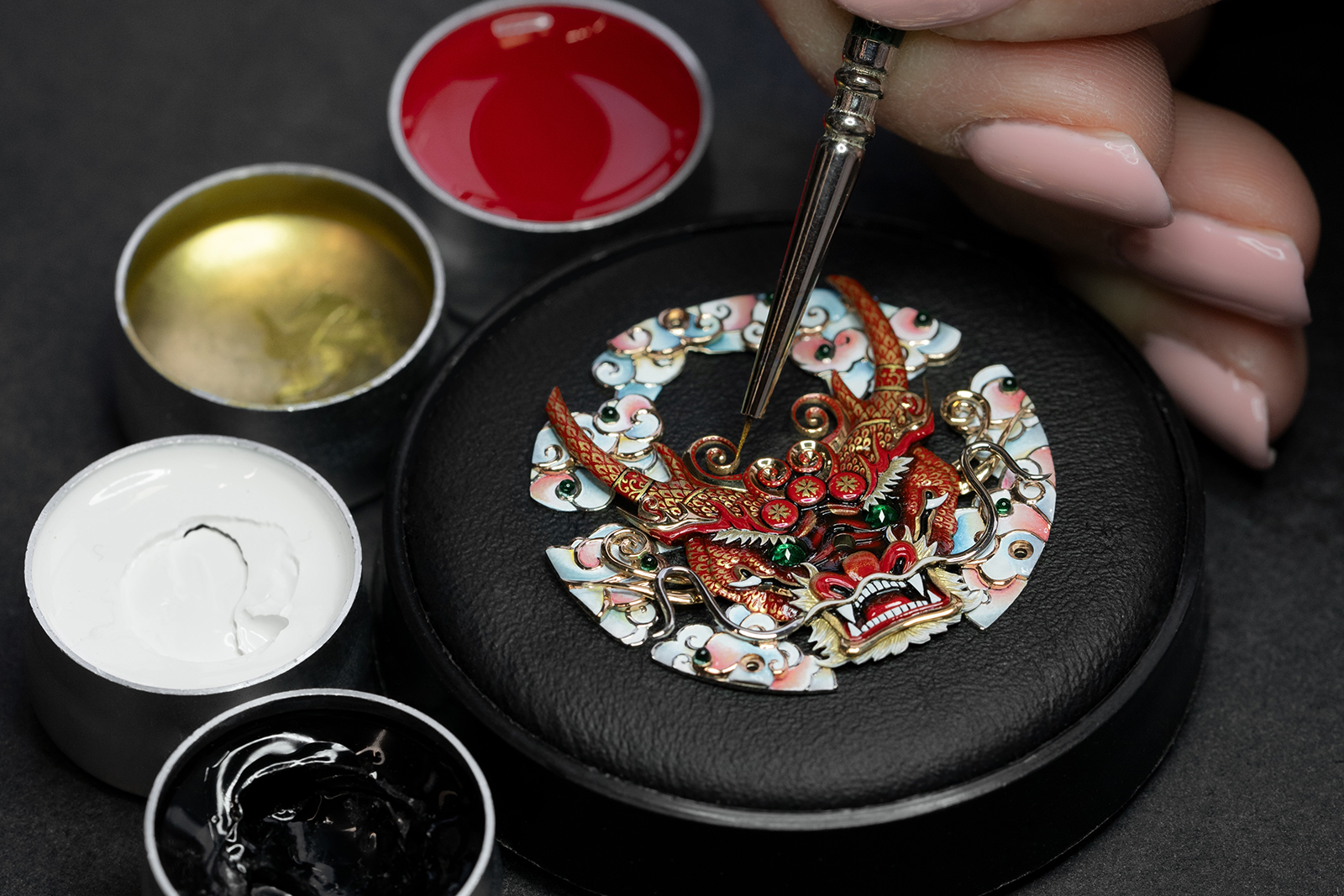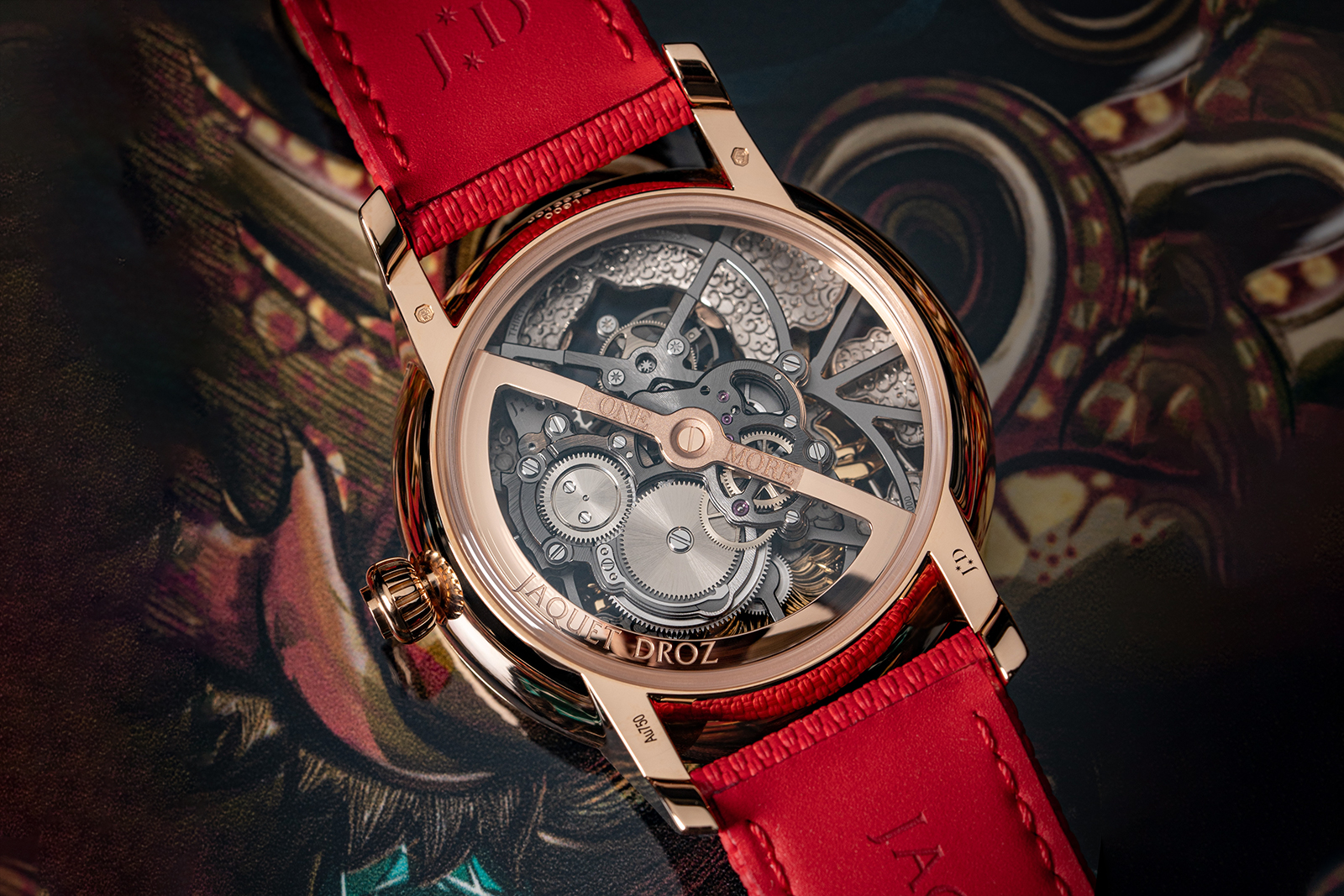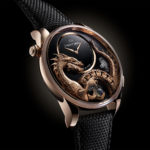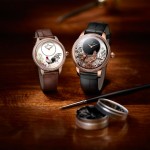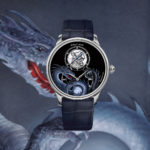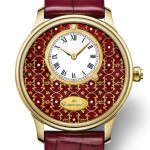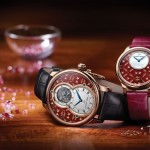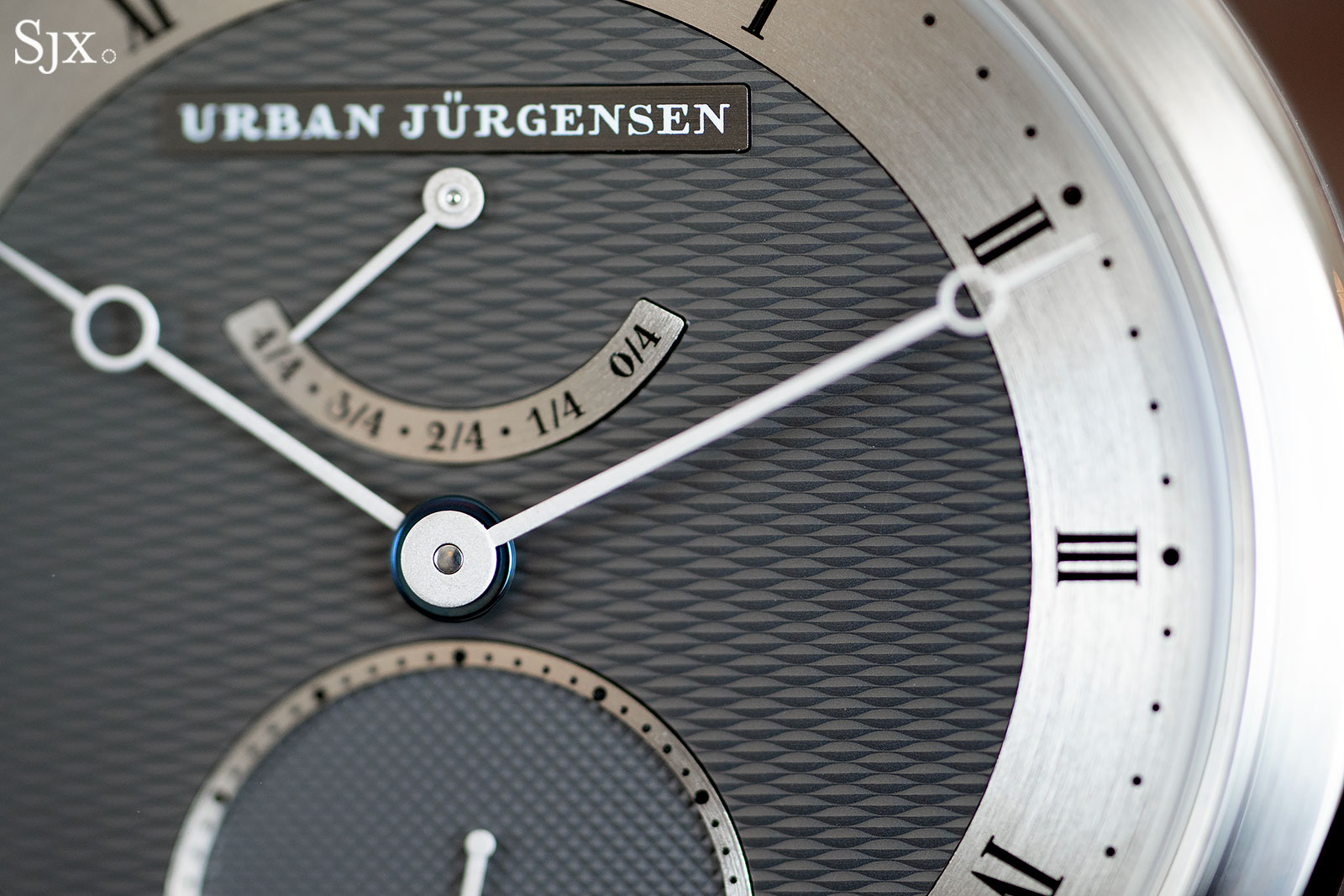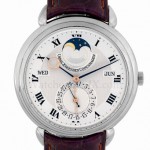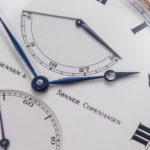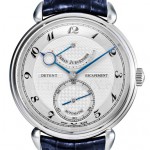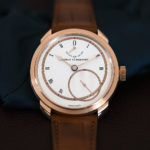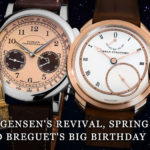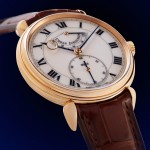Urban Jürgensen made its comeback earlier this year with an impressive line-up that includes the flagship UJ-1 Tourbillon. Much of the credit for the brand’s watches and watchmaking goes to Kari Voutilainen. Mr Voutilainen has imbued Urban Jürgensen’s watches with the high standards of quality synonymous with his own brand, resulting in watches that are equally exquisitely craft and steeply priced, but arguably worth it.
Though best known for his eponymous brand, Mr Voutilainen is also co-chief executive of Urban Jürgensen (and also a minority shareholder). His fellow steward of the Danish marque that is now headquartered in Bienne, Switzerland, is Alex Rosenfield. While Mr Voutilainen is in charge of watchmaking, Mr Rosenfield leads marketing and branding.
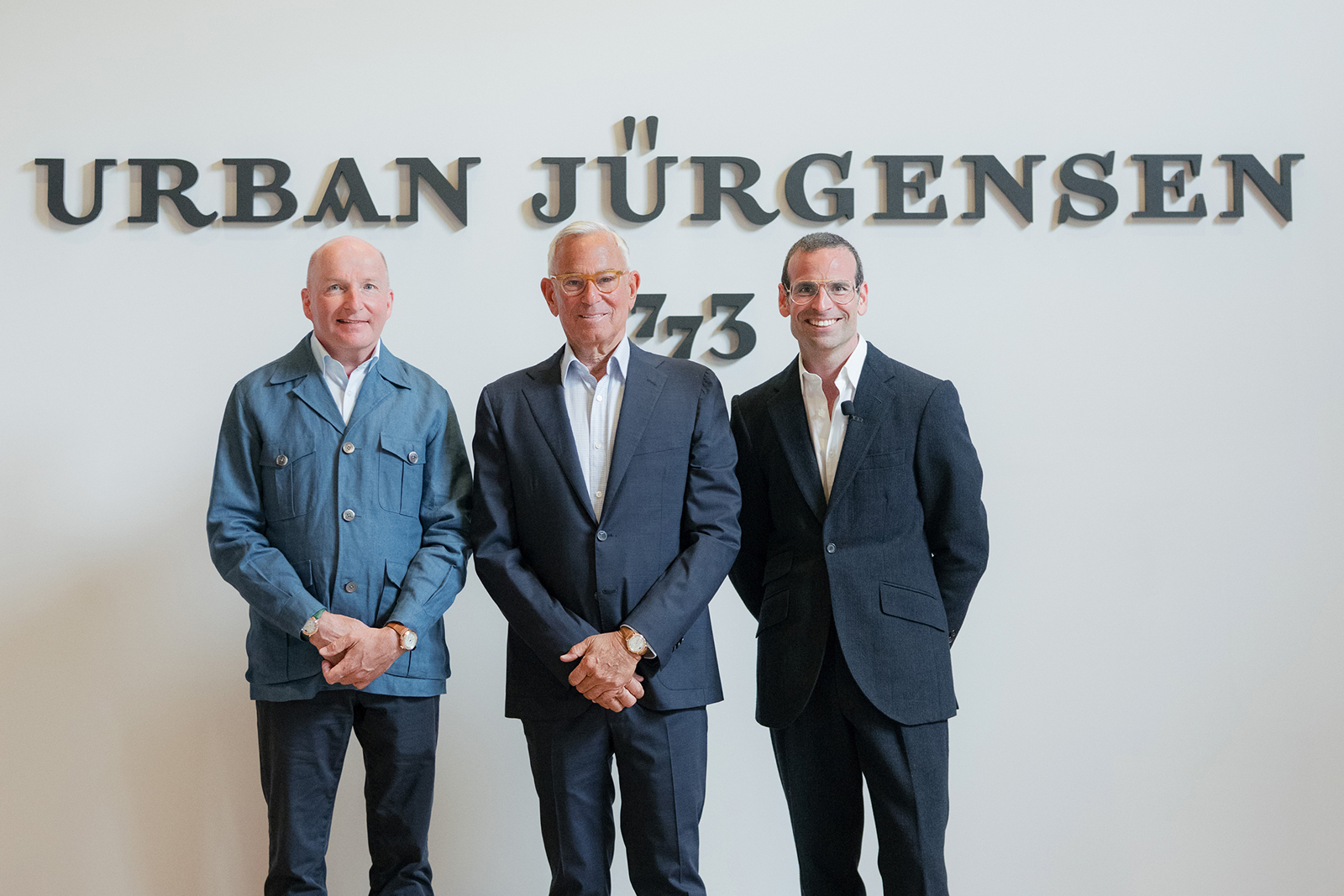
From left: Kari Voutilainen, Andrew Rosenfield, and Alex Rosenfield. Image – Urban Jürgensen
Given the opportunity to speak at length with Mr Voutilainen, I could not refuse. We discussed the true nature of artisanal work, ranging from movement decoration to guilloche, the details of Urban Jürgensen’s movements, and more. You can find his insightful answers below.
But interestingly, my conversation with Mr Voutilainen reminded me of the first time I met him, which was at Baselworld 2006 when he launched the Masterpiece Chronograph (with a special hairspring from what turned out to be a questionable supplier). Even two decades ago, well before he was famous, Mr Voutilainen was passionate about the same things, traditional craftsmanship and quality.
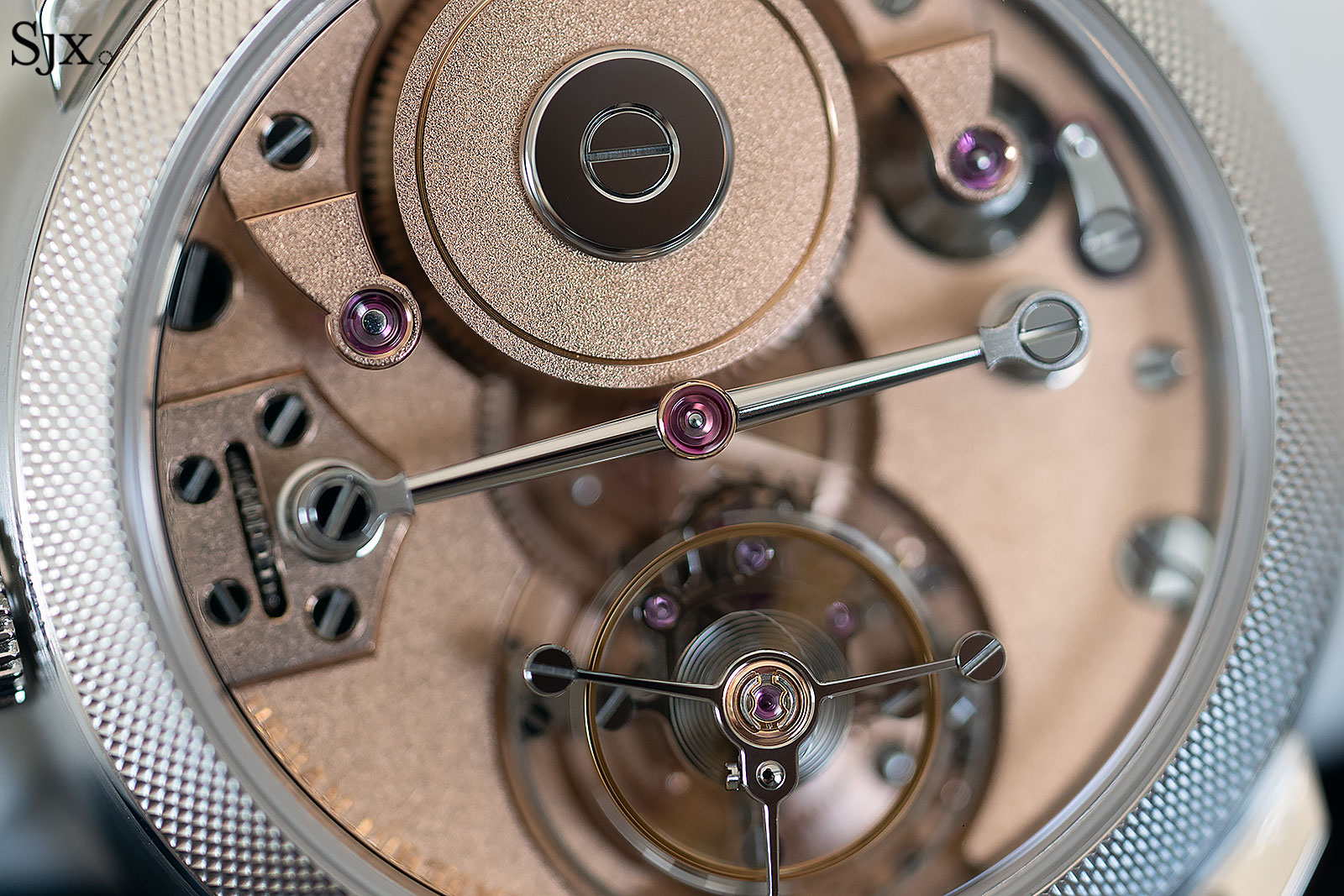
The movement of the flagship UJ-1 Tourbillon
Back in 2006, he told me, “Today the tendency is to be able to produce the watch as efficiently as possible [where] all the work is done… with machines, even finishing is done with machines with as little handwork as possible.”
“The value is we can do something with [our] hands, we can’t transport that,” he added, “You can pay the people in the Vallee de Joux millions, but they won’t go elsewhere.”
Nineteen years on, he’s still hard at it, in the Vallee de Joux.
The interview was edited for length and clarity.
On artisanal techniques
SJX: Judging by the three watches launched, it’s clear that Urban Jürgensen is not just complications, but it’s also about finishing and decoration – the movement, guilloche. Why is that so important for you and for this brand?
Kari Voutilainen (KV): Personally, I like it when things are done properly so if we do finishing, it should beautiful.
For me, the starting point is always the quality of work. Then afterwards we see how much time it will take and what it will cost. If we fix the price and time first, then we limit the creativity; it is a compromise and you see it on the final product.
It’s the same for cars. You have industrial cars; Mercedes is beautiful but they are all the same. A Bugatti is beautiful and unique. A Mercedes will never be a Bugatti and Bugatti will never be a Mercedes. And of course the price is not the same.
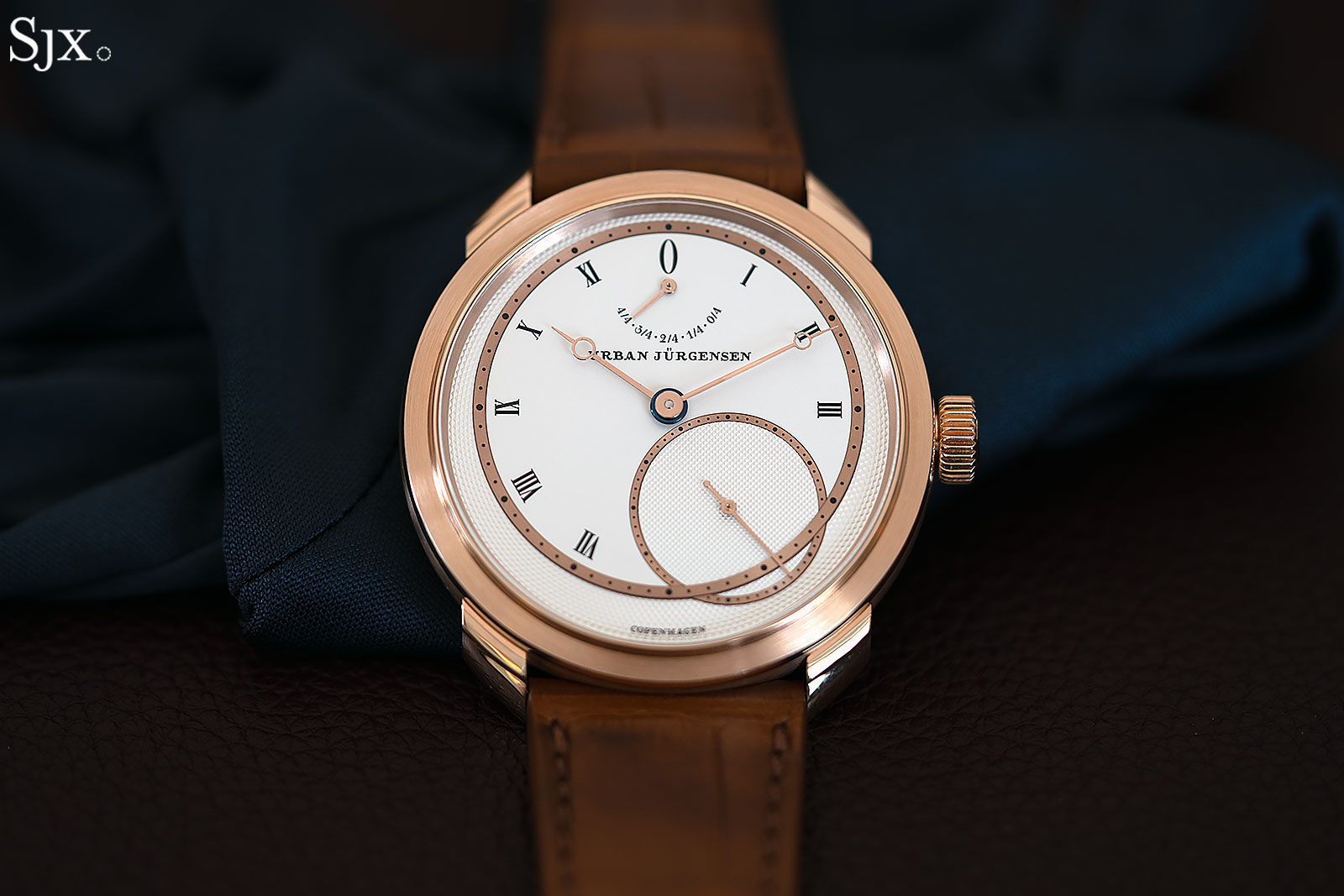
The time-only UJ-2
SJX: Would you say that the quality of the Urban Jürgensen watches is the same as Voutilainen?
KV: Yes, but we try to do it differently. We are always trying to improve the quality. So, if you look at the dials and engine turning, decoration – we can’t do any of that in an industrial way.
All the small details are finished. I don’t see any interest in seeking an industrial method to make it quicker and cheaper. I prefer to do it well, explain the work, and then charge a price. Instead of saying, let’s buy the screws, let’s find somebody who can stamp the thing, and that’s it.
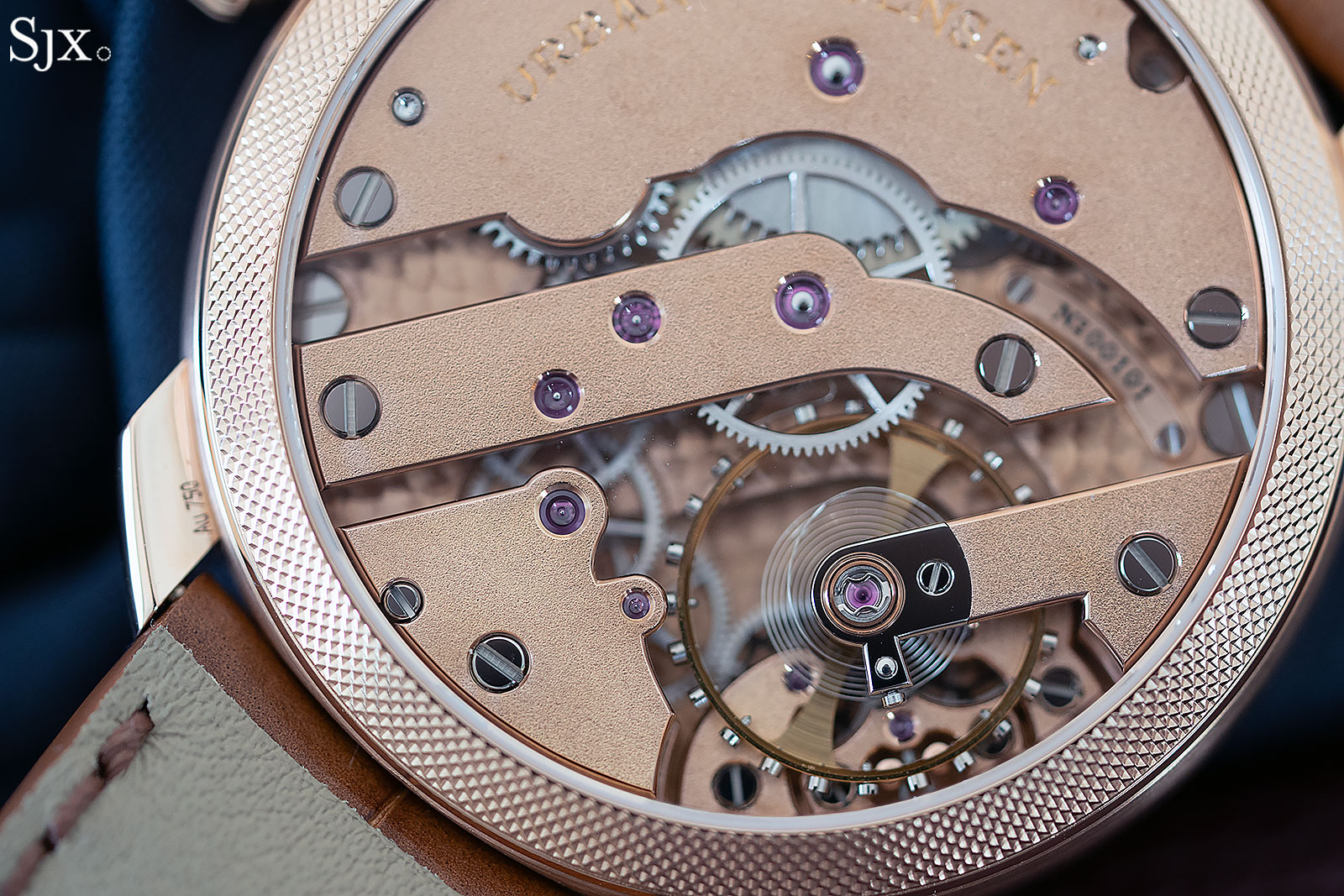
The UJ-1 movement that’s inspired by the historical “Jürgensen” calibre
SJX: What do you think of the advanced machine finishing today? Now watchmakers can create parts that look like they’re 100% hand-finished but are actually done on a machine.
KV: My opinion is that we should remain credible and honest. Because today the world is so open. When you do these things, one day somebody will find out.
SJX: I think it has become difficult for the customer to understand or to tell what is really done by hand. Even I don’t know the difference sometimes. I look at some of these movements and it looks like hand finishing, but actually it’s machine finishing done by very good suppliers, with very little hand finishing at the end. As an expert, can you tell?
KV: Not always, but I can see after visiting some suppliers. It’s interesting to see that some suppliers – without naming any names – say they do everything by hand but…
For us, when customers come to visit, we can show what we are doing. We can show that the finishing is done on these antique machines. And you as the customer can compare afterwards.
SJX: I was speaking with the decorator earlier today and he was explaining how the finishing on the Urban Jürgensen movements is done – it’s really artisanal. He also really enjoys working for you, in fact, he said working for Urban Jürgensen and Kari is a dream come true.
KV: Thank you.

Kari Voutilainen (second from left) with his daughter Venla, and the Urban Jürgensen team, including Bertrand Savary, brand president (second from right), and Stéphan Bastide, decorator (extreme right). Image – Urban Jürgensen
SJX: Today, does the very best CNC guilloche looks the same as a traditional guilloche?
KV: It depends because there are two ways to do it. Often guilloche is milled [on a CNC machine] using a turning tool. When you’re machining it, the tool is not very rigid so it doesn’t give the same result. To mask the technique such dials are often sandblasted so they’re matte.
Antique [engine turning] machines have high pressure since the head is heavy and they have a counterpoint. And then the cutting tool is on the cross slide, which is pretty massive, and the tool is sticking out only perhaps half a centimetre, so it’s rigid.
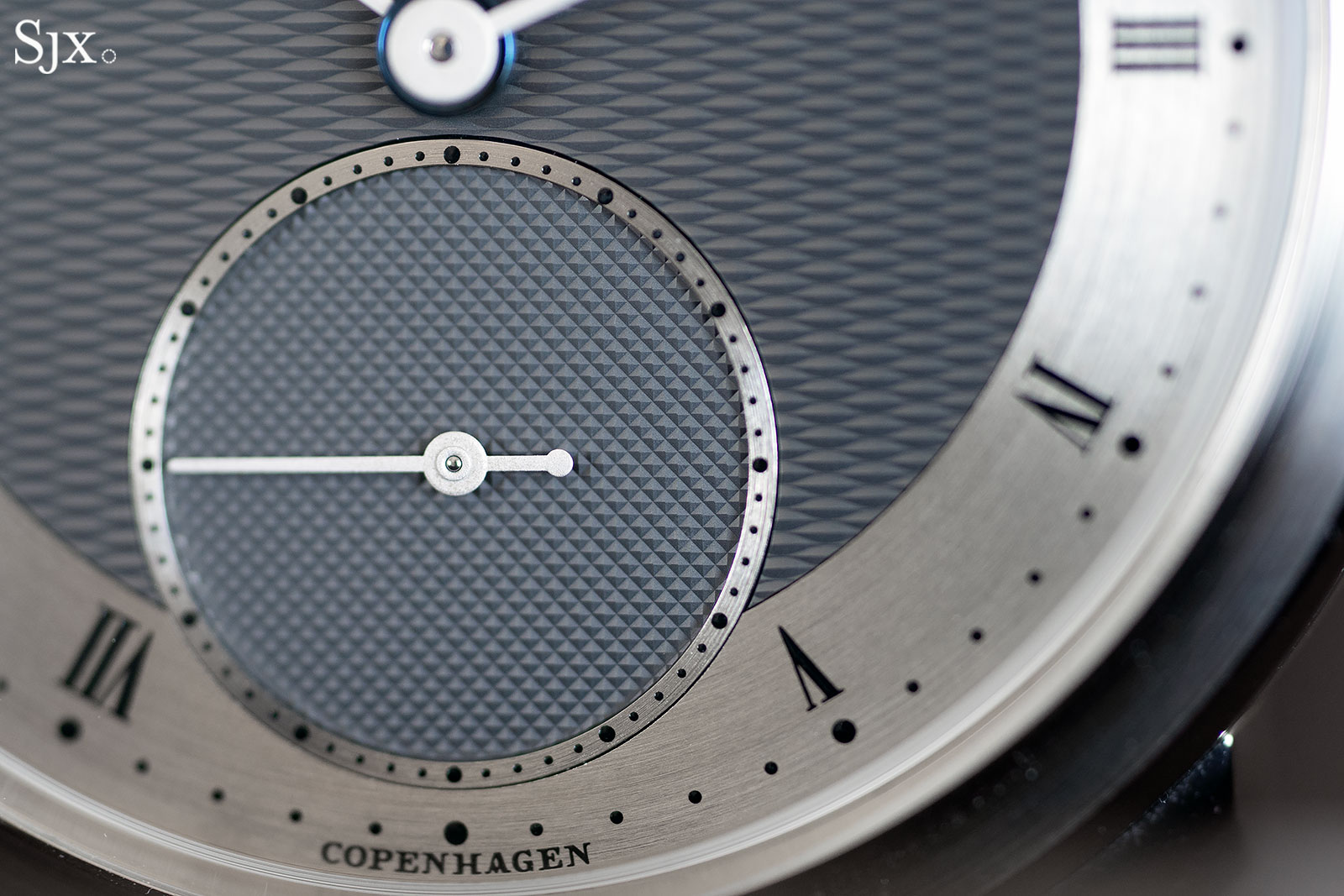
The UJ-1
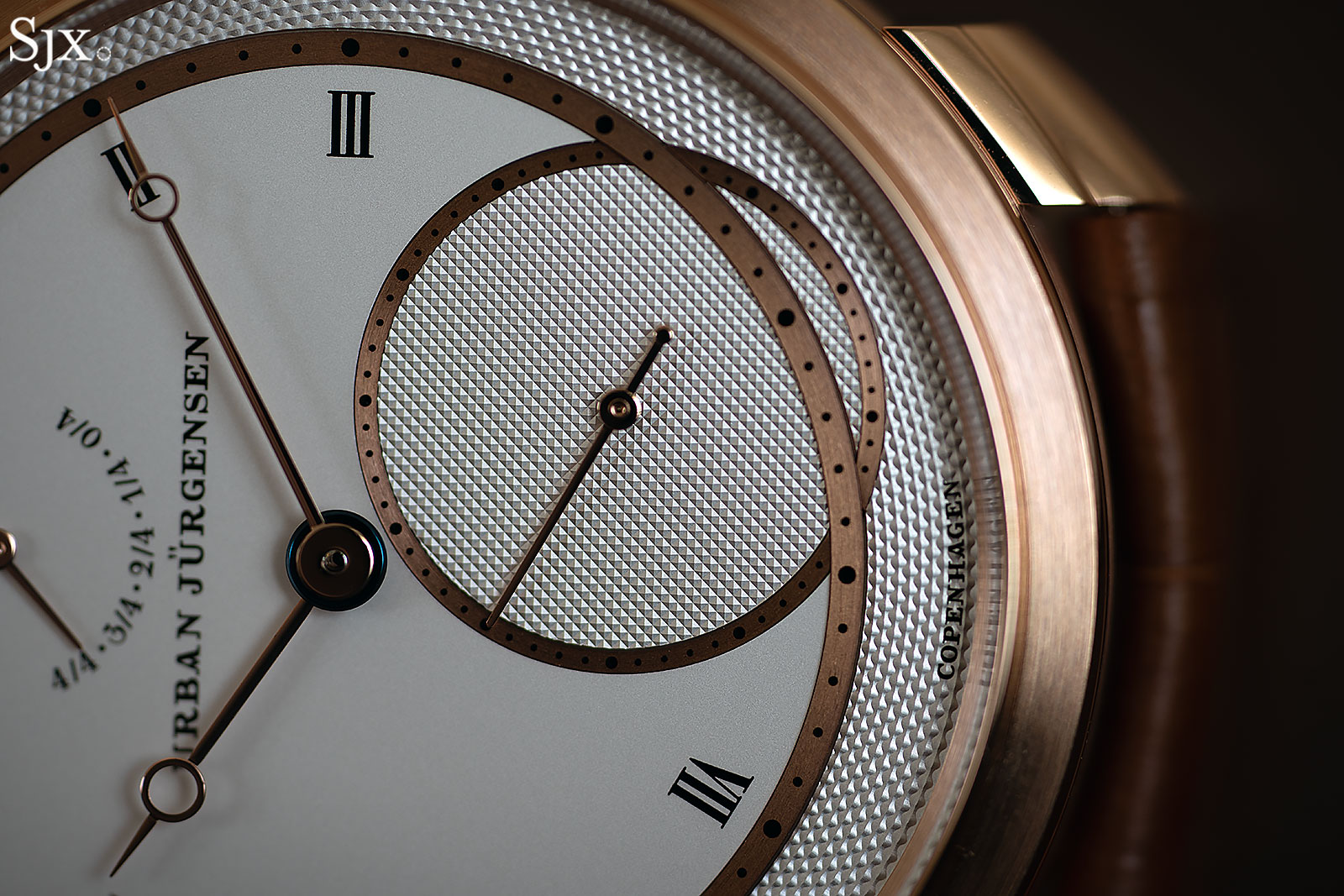
The UJ-2
SJX: The [Urban Jürgensen dials] are glossy, so they are not blasted.
KV: Yes, applying a matte finish will hide all the problems [with a milled dial]. When you have [traditional and milled dials] next to each other, you can see it, like this one looks really clean and sharp.
And then we do the colour of the dial, so nothing can be hidden. If you have a tiny scratch on the dial, the scratch will become extremely visible after colour treatment.
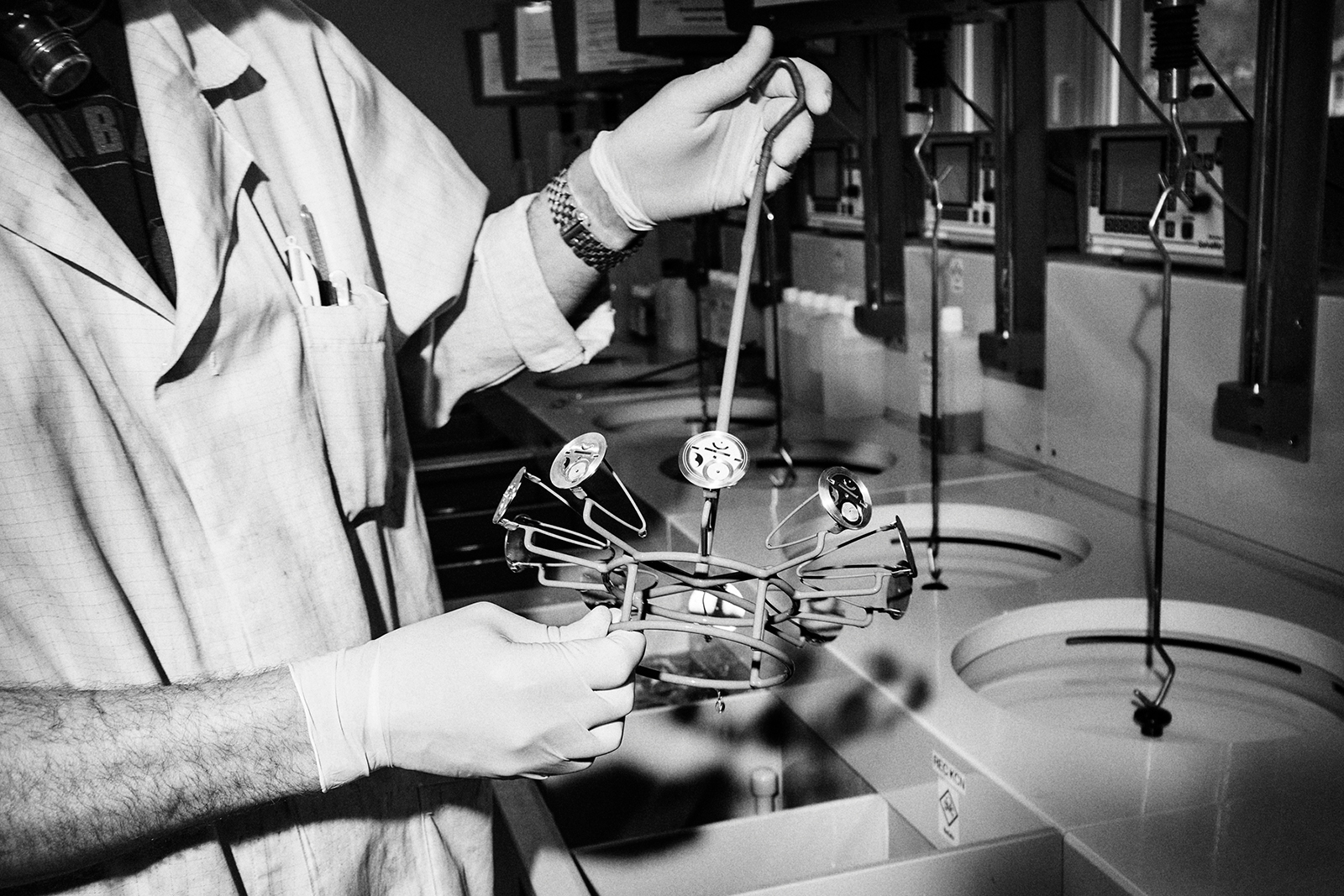
Guilloche dial plating. Image – Urban Jürgensen
On movements and construction
SJX: What was the most difficult aspect of constructing the Urban Jürgensen movements?
KV: There was no technical information available on how to build the flying barrel of the tourbillon. There was also no information on how to make the constant force mechanism. For instance, the spring that’s between the driving wheel and escape wheel – how much pretension, what sort of spring and so on. There were a lot of open questions.
SJX: How did you figure it out, trial and error?
KV: That’s sort of it, because [in the constant force escapement for example,] we did the calculations and we were very happy that the fabrication of parts was precise. It worked really well, but with the [tourbillon] cage it was much more challenging to set up.
The shafts [for the two escape wheels] are very small. Then the two escape wheels must be pivoted separately so that they are extremely free spinning, because more closer you go to the [balance], if you have a like extra friction somewhere it will kill the amplitude.
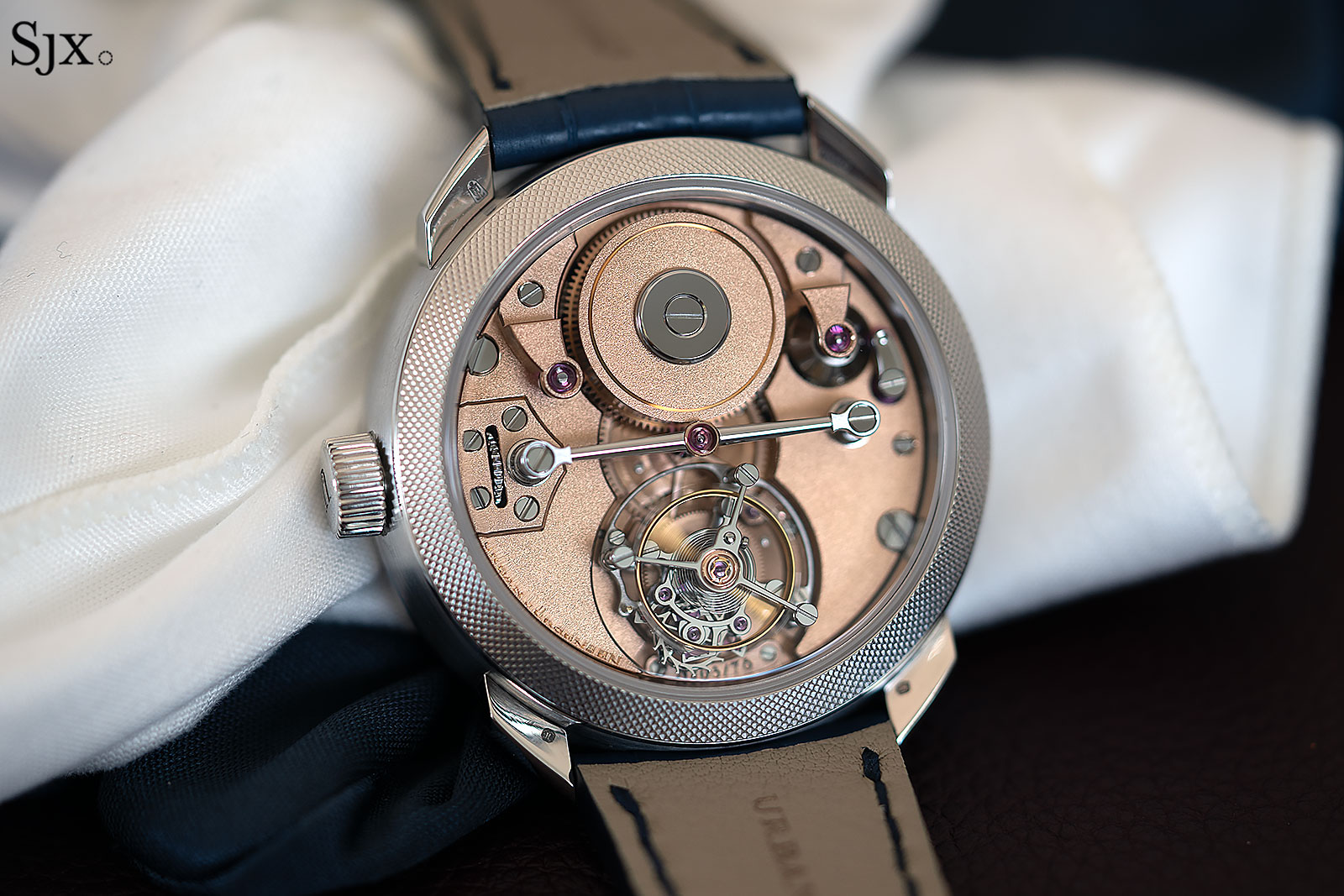
Inspired by the Oval pocket watch, the movement of the UJ-1 with its “floating” barrel and flying tourbillon
SJX: Where did you get this inspiration for the design of the tourbillon cage? Was it to balance the weight or a historical shape from Urban Jürgensen?
KV: It’s about the balanced weight as the tourbillon has more weight on one side because of the pallet and two escape wheels. We had to poise the cage and also the balance wheel with weights.
If the cage is not balanced, you have a huge difference on the vertical position. Of course, in the long term the timing will still be good in the vertical [because of the tourbillon].
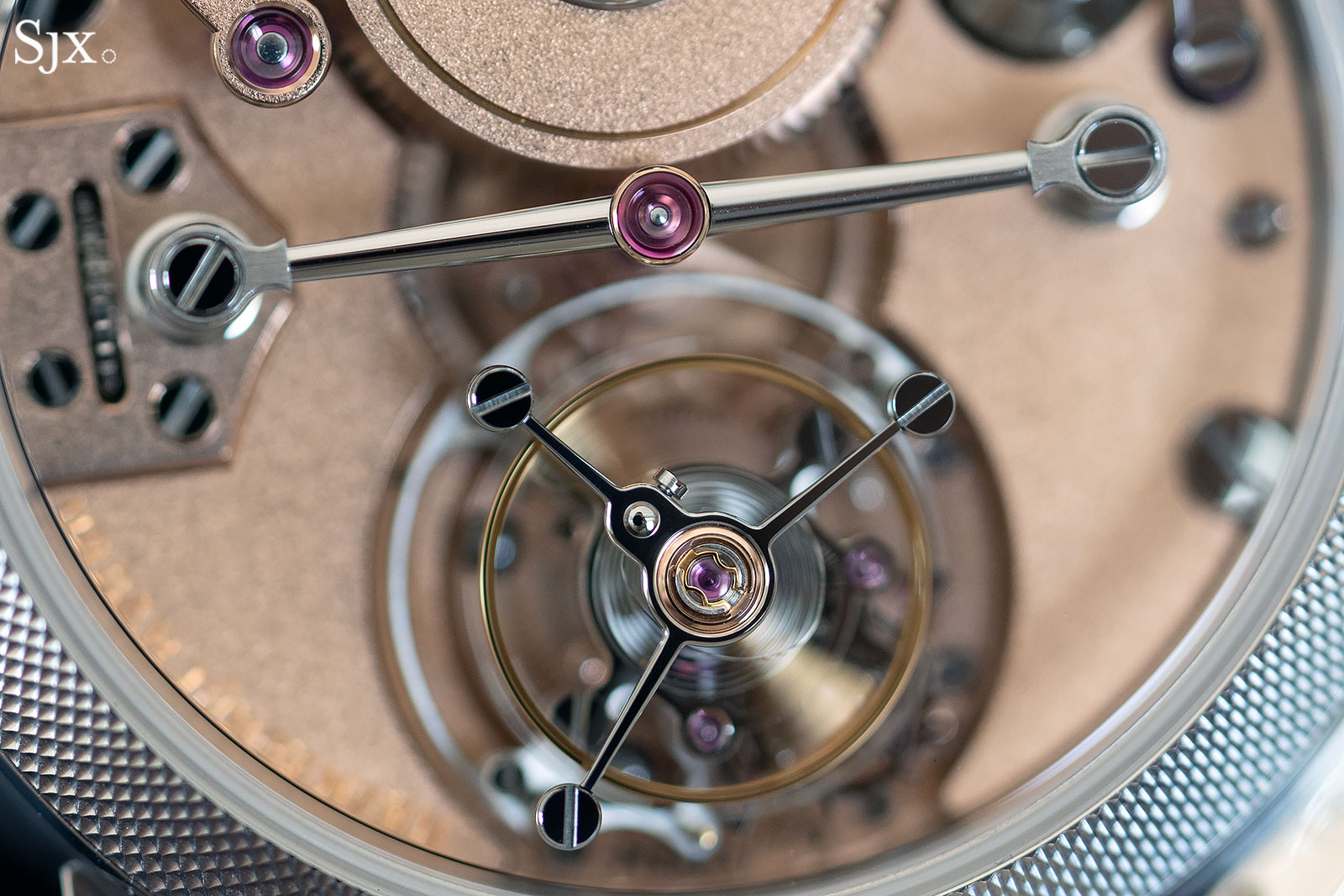
The poised flying tourbillon cage
SJX: The UJ-1 and UJ-2 are actually quite thin, but UJ-3 perpetual calendar is quite thick. I’m sure when you constructed it, you tried to make it thinner. Why is it still this thick?
KV: The construction was done with Andreas Strehler, while [the UJ-1 and UJ-2] are entirely our own constructions. Andreas’ mechanism is [reliable], he has done this calendar before. It’s a new calendar mechanism, but principles are the same. It’s not very thin as a calendar, but it is [mechanically sound].
Since it was a collaboration with him, the UJ-3 is half integrated. There are elements that can be integrated down, but we still have a moon phase and another disc underneath, so they are top of each other.
If we had constructed it ourselves, we would do it in different way by [repositioning] the moon face here. That would already reduce the height.
SJX: You could potentially redesign the perpetual one day?
KV: Yes, we have been doing a construction in a way that echoes the [Reference 2 of the 1990s].
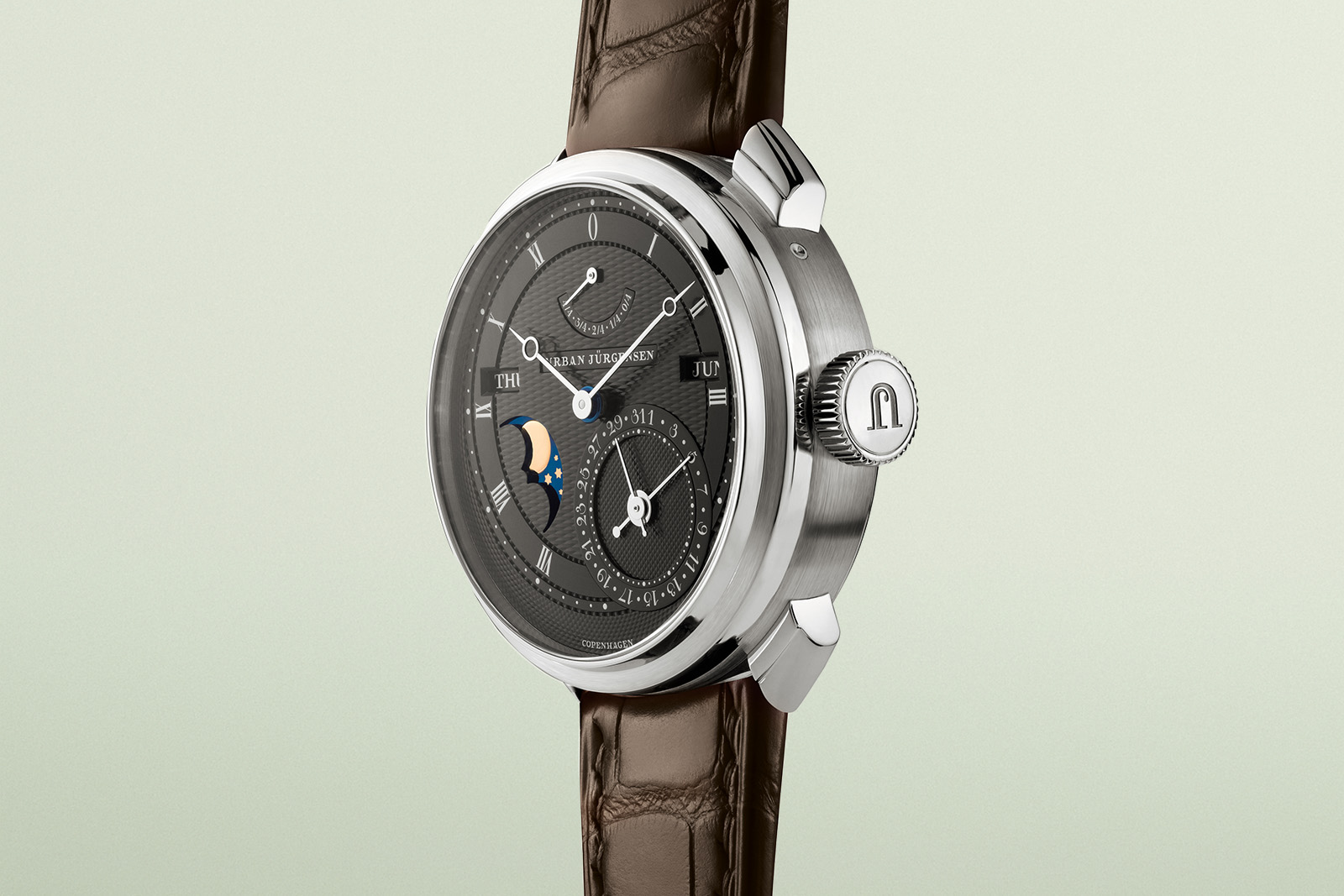
The UJ-3. Image – Urban Jürgensen
SJX: In the past Urban Jürgensen also had the chronograph with a Zenith El Primero movement. Are you planning a chronograph?
KV: Certainly, one day. But not soon because now we are obliged to concentrate to deliver these.
SJX: Are you planning to have an automatic movement?
KV: Not yet, because it’s a challenge in itself.
SJX: Today Urban Jürgensen will only use movements that you develop and produce. You’re not going to buy movements from others?
KV: It was my decision that when there was a change of the ownership, we had to change the whole thing to put the company in the different position and create a strong identity. So starting with a blank sheet of paper; we didn’t keep the old designs and old movements.
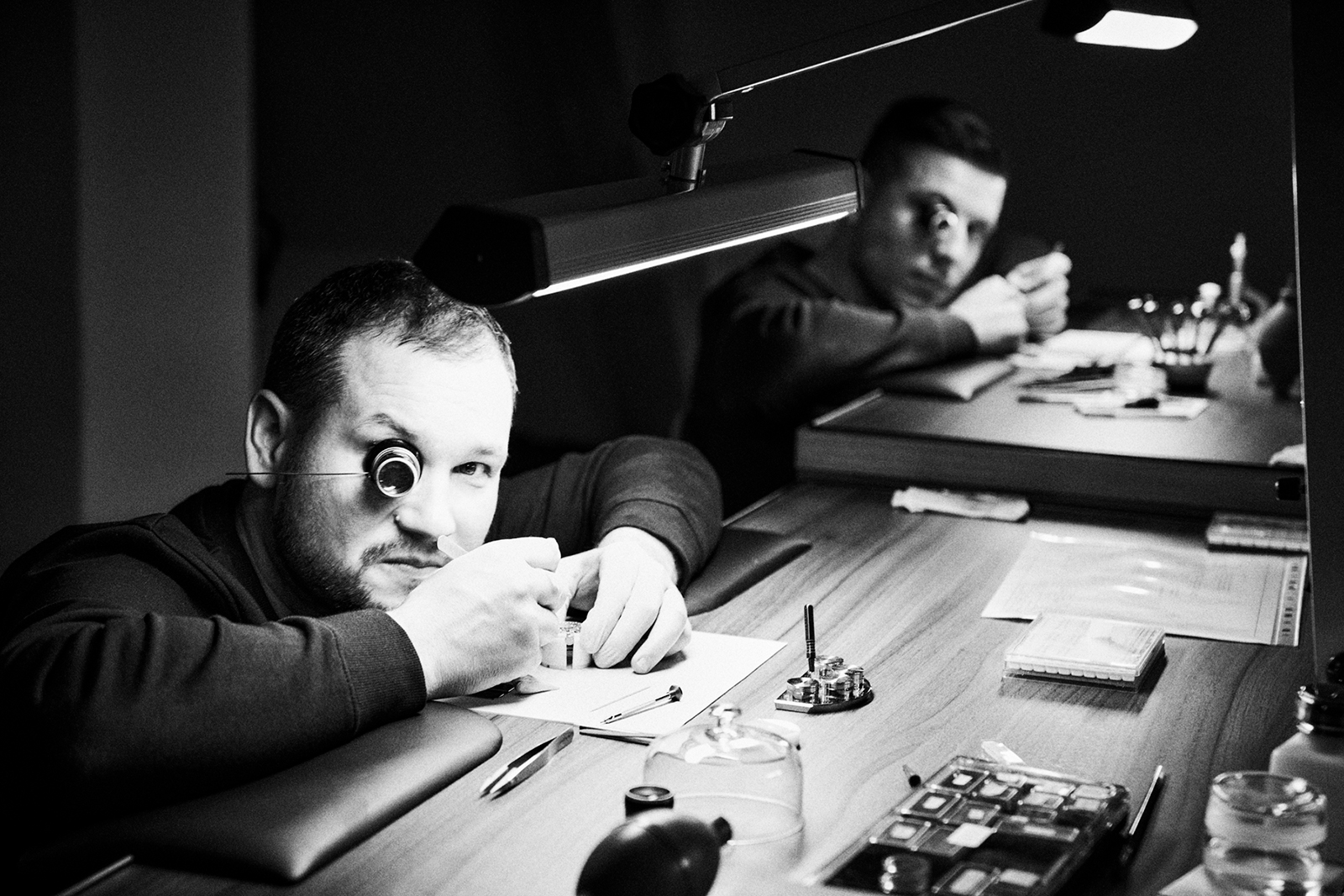
Watchmakers doing assembly at the Urban Jürgensen workshop in Bienne. Image – Urban Jürgensen
The brand
SJX: You mentioned the position of the brand. The price is almost the same as Voutilainen, are you targeting the same clients?
KV: In longer term, we want to target a new customer.
But in the short term, there are certainly a lot of customers who are already clients of Voutilainen. The group of collectors who buy watches in this price range is big, but for me, the customer who buys my watches is usually wearing Patek Philippe, F.P. Journe, Lange, and that’s it.
SJX: Who is new customer you want to target for Urban Jürgensen?
KV: So those are people that Alex [Rosenfield] has in mind, people are interested in art and culture for instance.
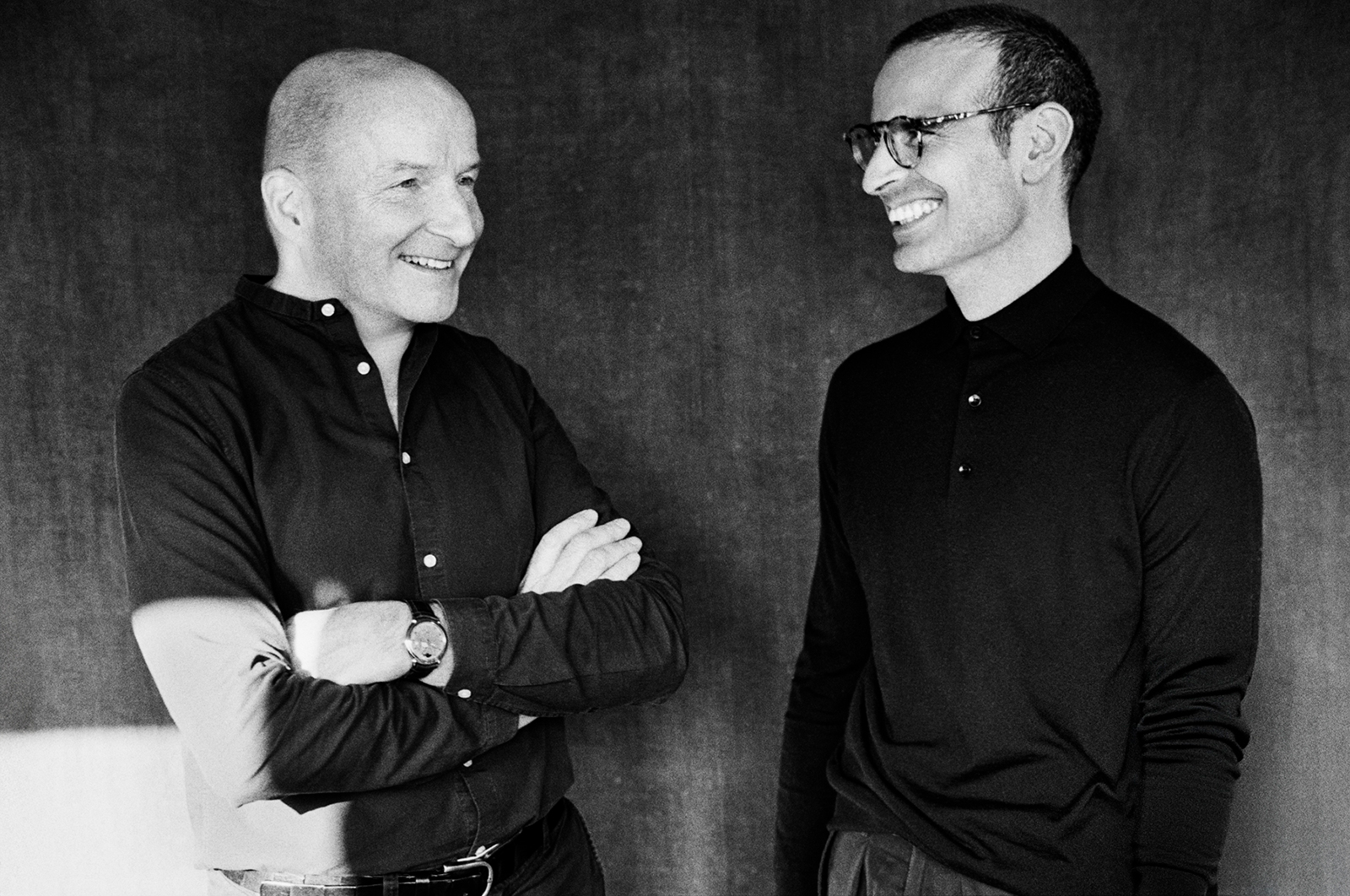
Co-chief executives of Urban Jürgensen, Kari Voutilainen (left), and Alex Rosenfield. Image – Urban Jürgensen
SJX: Is your involvement in this brand a long term commitment?
KV: Yes, that is the aim.
SJX: Do you think one day you’ll be focused on Voutilainen and Venla does Urban Jürgensen?
KV: Well, it’s too early to say how it will go. She has been doing [after sales service for Urban Jürgensen] and she has been managing the workshop.
SJX: Let’s a customer comes to you and says he has 100,000 Swiss francs. Should he buy an Urban Jürgensen or Voutilainen?
KV: I suggest Urban Jürgensen because you will get it sooner than a Voutilainen.
Back to top.